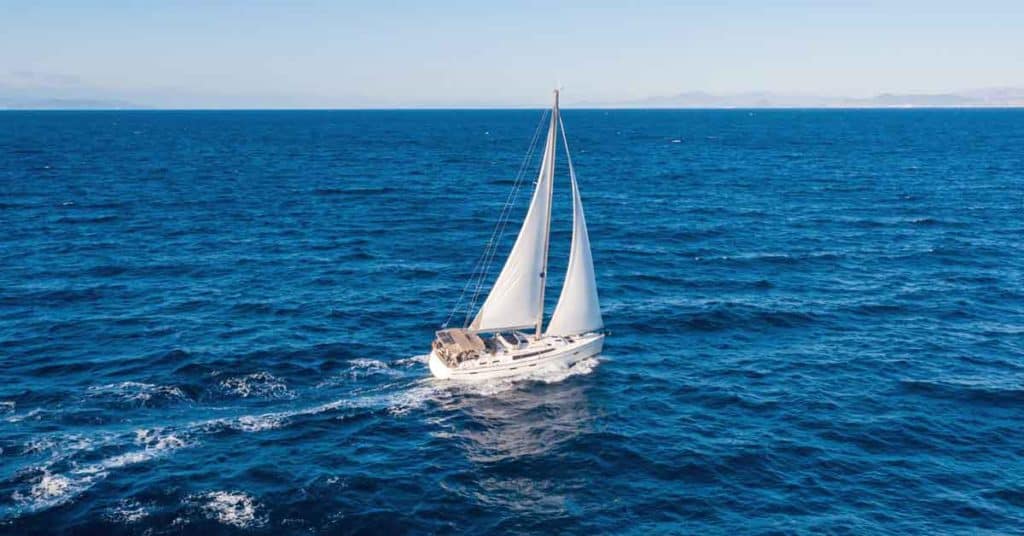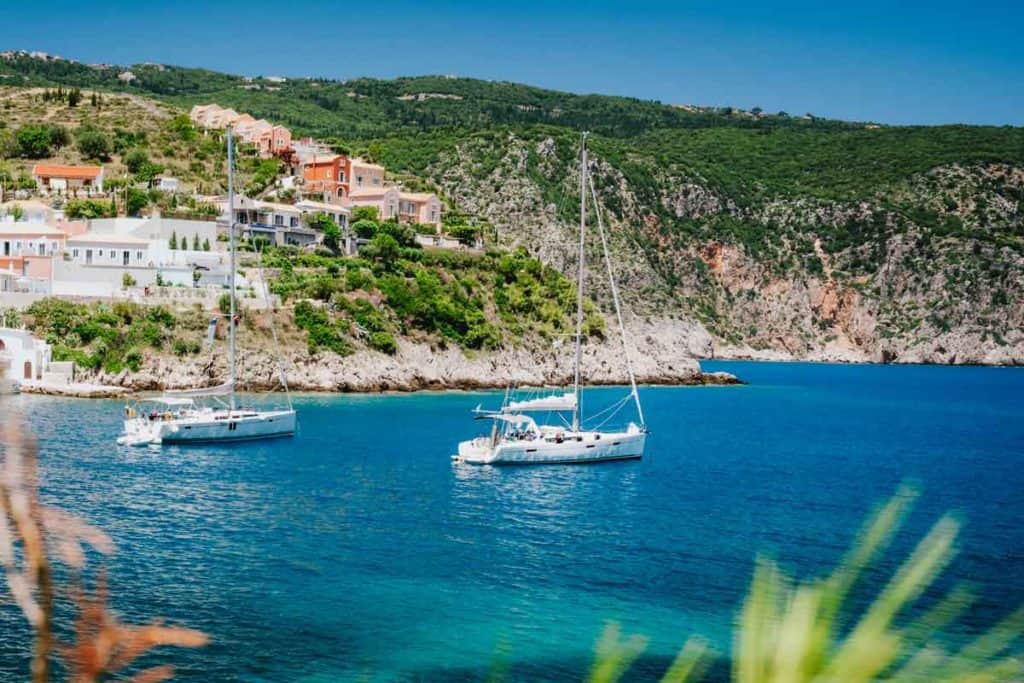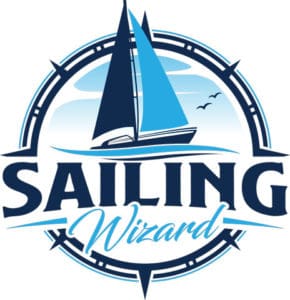Sailing has had a massive resurgence of interest recently due to its eco-friendly nature. But, while it seems like a great activity with zero impact on the environment, there is more to the story than you might initially think. Let’s take an in-depth look at sailing and whether it is terrible for the environment or not.
Sailing is not bad for the environment on its own but can be negatively impactful due to human error and negligence. There are many ways to make sailing more eco-friendly, including properly disposing of waste while on the water and not disturbing wildlife.
How bad sailing is for the environment is primarily up to individual sailors.
Knowing the proper ways to conduct yourself out on the water is a huge component in making sailing more eco-friendly.

Let’s dive right into it and discuss the impacts that sailing has on the earth, specific ways that sailing is bad for the environment, and ways to reduce the effects.
Your Guide to Environmentally Friendly Sailing
At the essence of sailing, it is merely harnessing the wind to move a craft through the water. Using the wind to power a boat is virtually harmless to the environment on its own, but there are many other aspects of sailing (some avoidable and some not) that can be quite harmful to the planet.
One of the biggest problems with sailing is the amount of waste that it produces.
Now, you might be thinking, “Doesn’t sailing use the wind as power and, therefore, not create any waste?” And while you would technically be correct, there are many other ways that waste is created while sailing.
Most larger boats powered primarily by wind have a small engine or trolling motor attached for docking or when the wind isn’t strong enough. This motor can potentially harm the environment in many different ways if there is a fuel leak or an accident while refuelling.
And even if you have a smaller sail-powered craft without a motor, there are many ways that waste is created and could find its way into the water.
Garbage, plastic water bottles, non-eco-friendly cleaning supplies, and sewage are just a few of the forms that waste can come in while you’re sailing.
In addition to the waste that sailing produces, there are also concerns regarding its impact on wildlife, wildlife habitats, and invasive species spreading.
All of this to say, sailing can be quite detrimental to the environment if you don’t take steps to reduce your environmental footprint while out on the water.
Sailing is an activity that people enjoy worldwide, so even if a small percentage of sailors make poor decisions regarding their waste output, it adds up pretty fast.
However, this also goes the opposite way and means that your choices while sailing significantly impact the environment around you and the earth as a whole.
Potential Ways that Sailing Can Harm the Environment
In the following few sections, I’ll go over a few of the major ways sailing is negatively affecting the environment and some steps you can take to reduce your impact when you’re out on the water.
It’s all about being aware of what you are doing and the impact that it could have on the environment. Some of these things might seem small, but the combined effect of millions of people doing them makes a massive impact on the environment.
Littering the Water with Garbage and Waste
According to the journal Science, between 4.8 and 12.7 million metric tons of plastic enter the ocean each year. While most of this is unrelated to sailing, there is already a ton (well, millions of tons actually) of plastic and waste in the ocean, and you don’t want to add more.
And it’s not just plastic that is a problem. Garbage comes in many forms, and most of the time, it is quite harmful to the environment. Food containers, wrappers, bottles, and many other types of trash are often brought onto a boat and accidentally end up in the water.
How to reduce your waste when sailing
It all comes down to you being aware of the waste you are creating while sailing and making sure it doesn’t end up in the water. It’s really quite simple in theory, but it can be quite challenging once you are out on the water.
There are, however, a few things you can do to help make not adding trash to the water a little easier. One of the biggest things you can do is simply bring as little waste or waste-producing items on board with you as possible. You can’t lose what you don’t have.
Here’s a great video with some ideas for how you can reduce the waste you produce when sailing:
If you do end up with garbage while you’re out sailing, having a specific bag or secure place where all trash goes can help it not end up in the water. Once you’re back on land, make sure to recycle as much as possible and properly dispose of your garbage.
Sailing Boats Can Pollute the Water with Oil, Fuel & Toxic Liquids
While this mostly applies to sail-powered boats with a motor, the potential impact it can have on the environment is quite substantial, so it’s worth mentioning.
There are many situations where fuel, oil, or other harmful liquids can get into the water because of sailing. These accidents that contaminate the water can happen for various reasons, but some of the most common causes are boat crashes, refueling spills, and leaks.
Toxic cleaning detergents and liquids can also cause quite a bit of damage to the environment and can contaminant the water.
How to reduce water pollution from your sailing yacht
Most of the time, it is entirely within your control to prevent polluting the water with oil, fuel, toxic cleaning supplies, and other liquids. You just must be vigilant, inspect your boat often, and think about what harmful liquids could potentially leak into the water.
Be especially careful while refueling your boat’s motor or transporting fuel because this is a prime time for a mistake to occur that could pollute the water. Always be careful and use a tightly sealed container.
Maintain your motor and keep it in excellent working order to minimize the chance of contaminating the water and having technical issues. You should also have your boat regularly inspected to make sure there are no leaks or other problems. Using eco-friendly cleaning supplies on your boat that won’t harm the environment is also critical.
Disposal of Sewage when Sailing
Proper sewage disposal is also super important because it could contaminate the water and smell pretty nasty. The laws regarding dumping raw and treated sewage into the water vary depending on where you are sailing, so make sure to do your research and know what’s legal in your area.
Even if you are allowed, it’s crucial to think about the potential issues that raw sewage in the water could cause nearby wildlife and natural habitats. It is often better for the environment if you pump your sewage out on-shore, even if it is technically legal to dump it.
How to properly dispose of sewage when sailing
The best thing you can do to cut down on the amount of sewage you create while sailing is simply to use the restroom before you go out. It’s a pretty simple piece of advice, but it will dramatically take down the amount of sewage you create while sailing if you listen to it.
If your boat allows, it is vital to have a sewage holding tank or treatment system on board to deal with any sewage created while you’re out on the water. Always keep everything clean and inspect hoses often to catch leaks as soon as they appear.

Sail Without Disturbing Natural Habitats or Wildlife
There are wildlife and wildlife habitats nearly everywhere. If you are sailing on a body of water, chances are, there are thousands of different animals and habitats nearby that you should avoid damaging or disturbing.
Usually, it is required by law to not engage with or get near wildlife, but even if it’s not, getting too near wild animals could result in you hurting them or the other way around. Damaging habitats is also very harmful to the environment and could have unforeseen consequences over time.
How to sail without disturbing wildlife
According to Sailors of the Sea, you should remain at least 300 feet away from all marine wildlife. Some types of wildlife in certain areas require more distance between you and them, so make sure to check with local officials before you go out.
You should also be mindful of natural habitats and listen to all posted signs. Make sure to follow local laws and avoid seaweed beds, reefs, nature reserves, or any other natural habitat or protected area.
Beaching or anchoring in the wrong place can also harm wildlife and habitats, so be aware and avoid doing those activities whenever possible.
